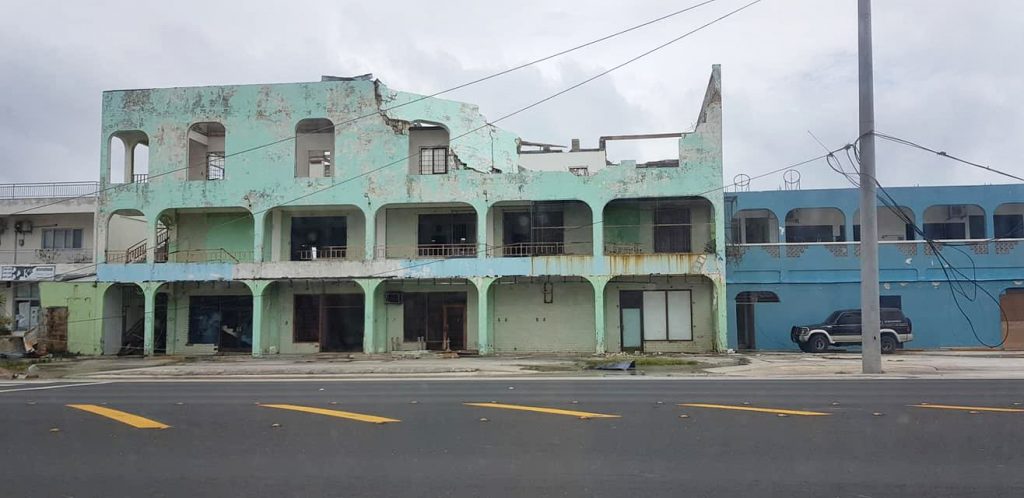Typhoon Yutu made landfall in the Philippines and Northern Mariana Islands on Oct. 24 as the second-strongest tropical cyclone to ever strike the United States. It reached its peak as a category 5 super typhoon just before making landfall on the U.S. territories Saipan and Tinian of the Northern Mariana Islands.
Instructional assistant professor of journalism Ji Hoon Heo is a native of Saipan, the largest of the Northern Mariana Islands.
Saipan is about 14 hours away from the U.S. mainland, making it difficult to get there quickly. Heo said the commercial airport was closed during the first week of the typhoon. Only military and emergency aircrafts were allowed to travel.

Typhoon Yutu made landfall in the Philippines and Mariana Islands earlier this week and is the strongest cyclone to hit the Mariana Islands to date. Photo courtesy: Brad Ruszala
“We are often forgotten just because we are so small. I’m a little sour about it because we didn’t get any press,” he said. “If you ask your friends, they won’t know about (Typhoon) Yutu.”
Heo moved to Saipan from South Korea when he was 4 years old and lived there until he was 18 years old.
“When people ask me ‘Where are you from?’ I don’t usually tell them I’m from South Korea,” he said. “I usually tell them that I’m from Saipan. That’s where I call my home.”
Heo described Saipan as a small island with a very close-knit community of approximately 50,000 people living there.
“It’s a beautiful place,” Heo said. “It’s got white sandy beaches, blue oceans, green oceans, all the different colors you never think an ocean would look like.”
Saipan was in the direct path of Typhoon Yutu and sustained extensive damage with wind speeds reaching up to 180 mph.
“You see cars completely flipped over,” Heo said. “You see containers out in the street, roofs completely gone, houses are completely gone.”
After the typhoon made landfall, people posted videos and pictures of the destruction. Heo said his friends told him they could hear the sound of concrete being ripped up from the ground.
“I’ve seen typhoons before, but this was something I’ve never seen,” Heo said.
Heo said he wants to help Saipan in any way he can.
“I’ve got to do something, so of course, donations were the first thing I tried to do,” he said. “But then, the question I asked was ‘What more can I do?’”
Heo said he and his friend found out there are various relief efforts located in different cities all around the United States. They developed a website called yuturelief.com to bring all of the different efforts together onto one website.
“We wanted to create this platform to organize those conversations so that people can see what’s happening and what areas of aid they could pour into,” Heo’s website states.
The website includes information about needed items, an interactive donations map and relief efforts in the U.S., Guam and Northern Mariana Islands.
“We could make some sort of organizational place where people could communicate with each other, so we can effectively put resources in one place,” Heo said.
He said the website has brought so many people together that he’s “running out of bandwidth.” He also created a Yutu relief Facebook group that has currently has over 900 members and an Instagram page with over 100 followers.

Typhoon Yutu made landfall in the Philippines and Mariana Islands earlier this week and is the strongest cyclone to hit the Mariana Islands to date. Photo courtesy: Brad Ruszala
Members of the Facebook group are from all over the world, from Washington state, North Carolina, to Utah and Guam.
“It’s really amazing to see everyone come together,” Heo said. “We need people to reach out and say ‘Are you okay?’ because (the citizens of Saipan) are hurting right now.”






